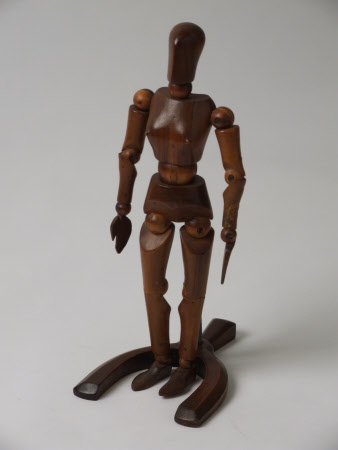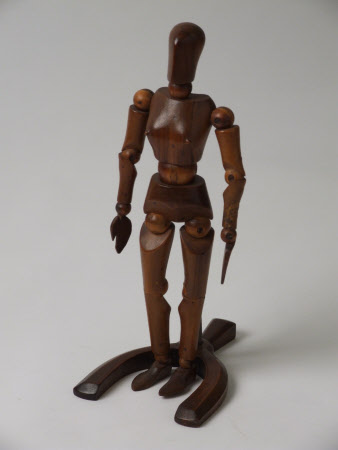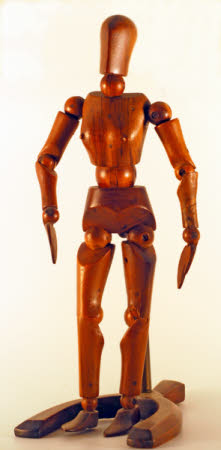Wooden artist’s model or “lay figure”
Category
Wooden objects
Date
circa 1901
Materials
Brass, Wood
Measurements
11 ins (h)5.5 ins (d)
Order this imageCollection
Shaw's Corner, Hertfordshire
NT 1274815
Summary
A wooden artist’s model or “lay figure”, circa 1901. Wooden lay figure with ball joints and interior metal frame. Supplied with metal support, mounted on wooden horseshoe base. Similar models were available through the sales catalogue of the artists’ supplier Charles Roberson, c.1901-3: “French lay figures in walnut wood”.
Full description
A wooden artist’s model or “lay figure”, circa 1901. Wooden lay figure with ball joints and interior metal frame. Supplied with metal support, mounted on wooden horseshoe base. Similar models were available through the sales catalogue of the artists’ supplier Charles Roberson, c.1901-3: “French lay figures in walnut wood”. This wooden “lay figure” may have been kept by Bernard Shaw as a reminder of the lay figure who sits in the background of the artist Dubedat’s studio in his play about death The Doctor’s Dilemma (1906). In the staging of Act III of The Doctor’s Dilemma at the Royal Court Theatre in 1906, the lay figure can be seen placed next to the easel. Shaw uses the lay figure as an emblem of death in the play, and we see this in the description of Dubedat’s studio: ‘A lay figure, in a cardinal’s robe and hat, with an hour-glass in one hand and a scythe slung on its back, smiles with inane malice at Louis.’ (Bernard Shaw: Collected Plays with Their Prefaces, 7 vols, Max Reinhardt, the Bodley Head, 1970-74, vol.3, p.379). Small lay figures were commercially produced by 1900 as an artist’s tool, and for several centuries had been preceded by larger artist’s mannequins in the studio. They were also traditionally linked with death through their association with wax figures, effigies, dolls, and puppets. Shaw was fascinated by all of these, and with the connections between statues, commemoration, and mortality. In Shaw’s play, the lay figure silently mirrors the artist whilst constantly reminding him of his mortality. (Alice McEwan, 2020)
Provenance
The Shaw Collection. The house and contents were bequeathed to the National Trust by George Bernard Shaw in 1950, together with Shaw's photographic archive.


